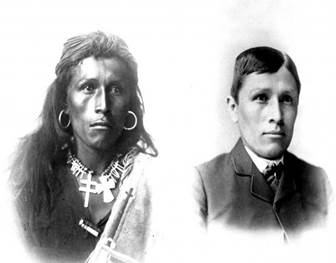The Office of Personnel Management released my agency’s engagement scores for 2015 last week and for the second year in a row, Asian Americans are the highest engaged group of employees by race at 72%. For the 7th year in a row, my group, American Indians/Alaska Natives had the lowest engagement levels by race of 58%
Why do you think Asian American workers do better than American Indian/Alaska Native employees when it comes to federal engagement? Are they smarter? Are they more motivated? Are they better educated? Do they work harder? Are they more liked?
Jennifer Lee and Min Zhou in their book, “The Asian American Achievement Paradox,” claim that Asian-American immigrants are more highly educated than the average USA citizen. They are disproportionately represented in medical, educational and scientific fields. These findings do not correlate to my agency since my workplace is not a medical, educational or scientific organization.
Could it be that federal holidays like Thanksgiving, Columbus Day and President’s Day marginalize American Indian/Alaska Native employees?
Could it be the embedded culture of offensive sports mascots, logos and team descriptions in the federal workplace objectify American Indian/Alaska Native workers?
Could the marginalization of American Indians/Alaska Natives in the federal sector be due to the daily assault of negative micro-messages they receive from phrases like: (1) low on the totem pole; (2) off the reservation; (3) hold the fort; (4) Indian giver; (5) on the warpath; (6) like wild Indians; (7) let’s have a pow wow; (8) too many chiefs and not enough Indians; (8) circle the wagons and (9) off the reservation.
Could the life shock of genocide rooted in the federal government’s policy to exterminate American Indians/Alaska Natives still echo in the hallways of federal offices?
Could the trauma of the confinement, relocation, forced dependency and lack of security placed on American Indians/Alaska Natives be unconsciously passed down from generation to generation among Native federal workers?
Could the family upheaval caused by boarding schools sanctioned by mainstream religious denominations and the federal government with its corporal punishment, sexual abuse and language/religion prohibitions be too much for our American Indian/Alaska Native federal colleagues to overcome?
Could their high rates of accidental death, child abuse and neglect, domestic family violence, suicide, substance abuse and incarceration keep them buried at the bottom of the engagement food chain?
Could popular notions about American Indians/Alaska Native that they don’t exist anymore, all live on reservations, subsist on government handouts, drink heavily or get rich off of casinos disempower them in public service?
Could their values of interdependence, obligation to others, group reliance, traditional values, kinship and family values conflict with the federal culture that recognizes independence, individual rights, self-sufficiency, continuous improvement and self-determination?
If great organizations are judged by how they treat their most vulnerable members, what does the deplorable engagement conditions of American Indian/Alaska Native federal employees say about the greatest nation on earth?





Leave a Reply
You must be logged in to post a comment.